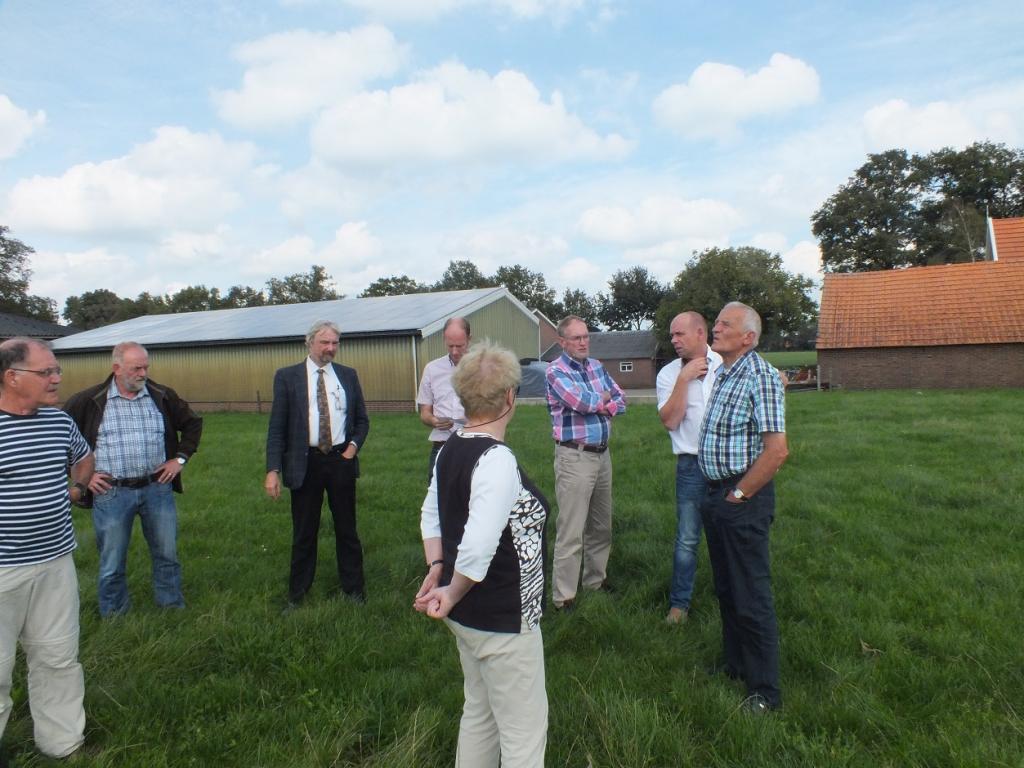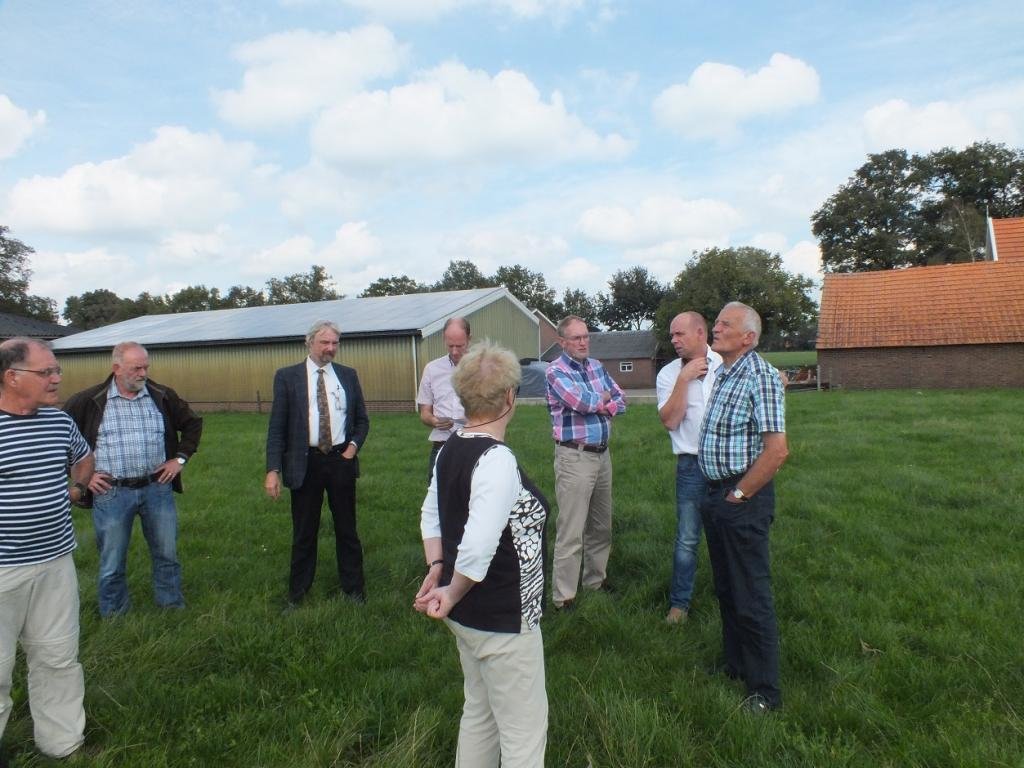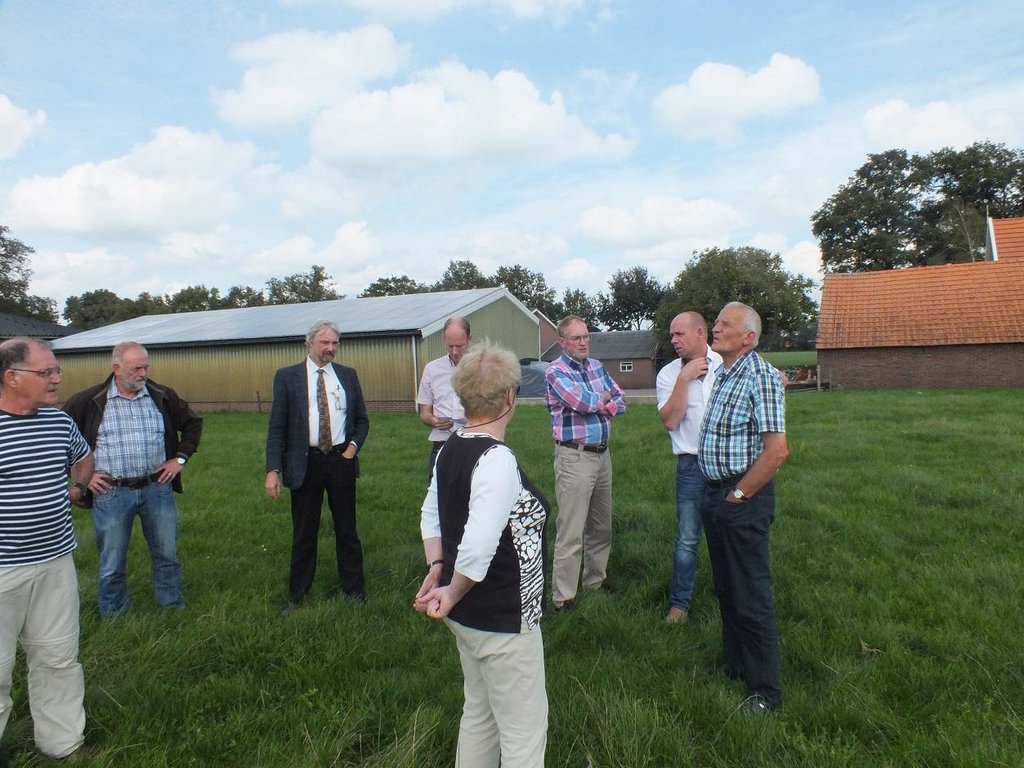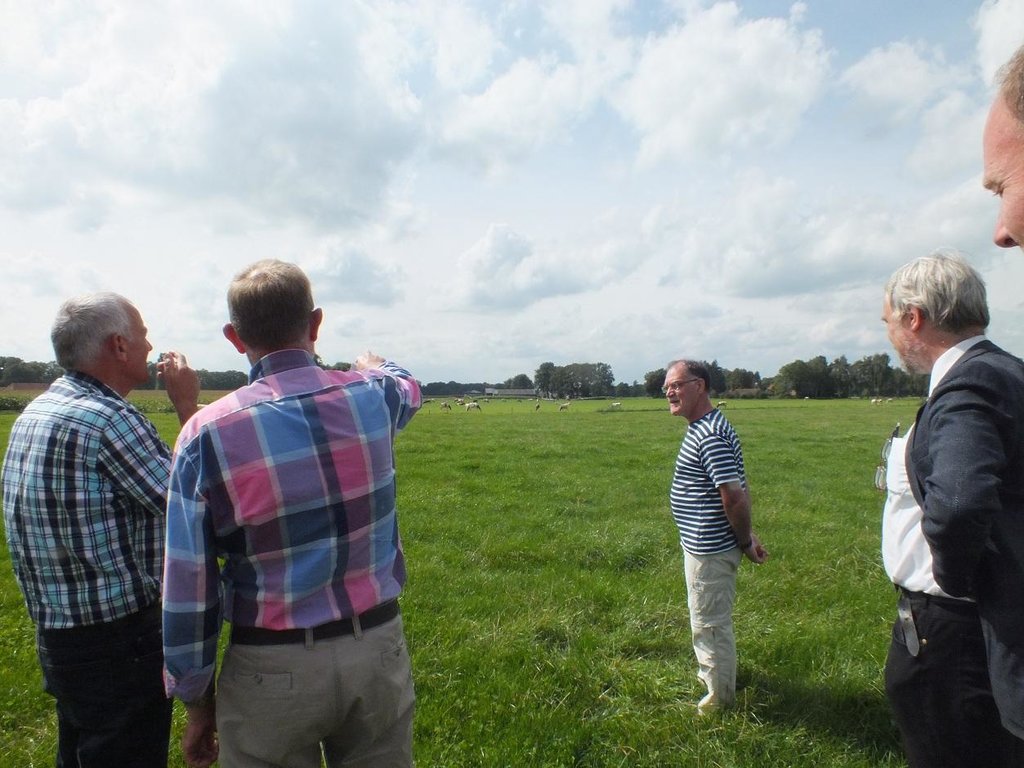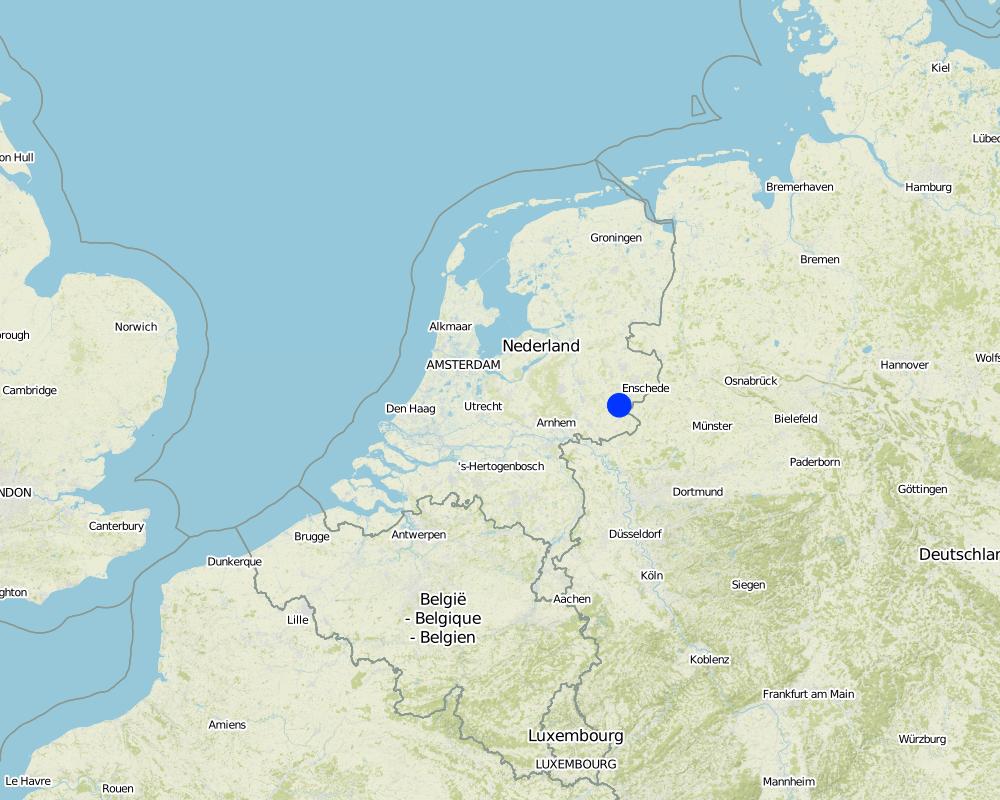Regional process, social innovation [Pays-Bas]
- Création :
- Mise à jour :
- Compilateur : Simone Verzandvoort
- Rédacteur : –
- Examinateur : Fabian Ottiger
Gezond Zand aanpak (Dutch)
approaches_2523 - Pays-Bas
Voir les sections
Développer tout Réduire tout1. Informations générales
1.2 Coordonnées des personnes-ressources et des institutions impliquées dans l'évaluation et la documentation de l'Approche
Spécialiste GDT:
Smit Annemieke
Alterra-Wageningen UR
Pays-Bas
Spécialiste GDT:
Rienks Willem
ROM3D
Pays-Bas
Nom du ou des institutions qui ont facilité la documentation/ l'évaluation de l'Approche (si pertinent)
Wageningen Environmental Research (Alterra) - Pays-BasNom du ou des institutions qui ont facilité la documentation/ l'évaluation de l'Approche (si pertinent)
Hoe Duurzaam - Pays-BasNom du ou des institutions qui ont facilité la documentation/ l'évaluation de l'Approche (si pertinent)
Provincie Gelderland - Pays-BasNom du ou des institutions qui ont facilité la documentation/ l'évaluation de l'Approche (si pertinent)
ROM3D - Pays-BasNom du ou des institutions qui ont facilité la documentation/ l'évaluation de l'Approche (si pertinent)
Ministerie van Economische Zaken - Pays-Bas1.3 Conditions relatives à l'utilisation par WOCAT des données documentées
Quand les données ont-elles été compilées (sur le terrain)?
18/09/2014
Le compilateur et la(les) personne(s) ressource(s) acceptent les conditions relatives à l'utilisation par WOCAT des données documentées:
Oui
1.4 Références au(x) questionnaire(s) sur les Technologies de GDT
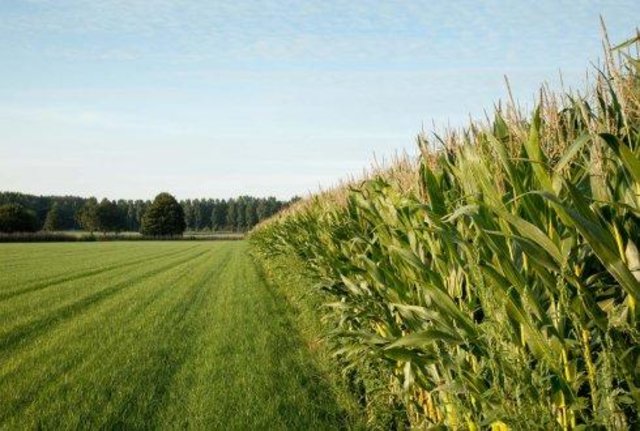
Postpone grassland renewal [Pays-Bas]
Postponing the timing of ploughing a grassland field by one or two years to reduce nutrient losses and organic matter decomposition.
- Compilateur : Jason Stuka
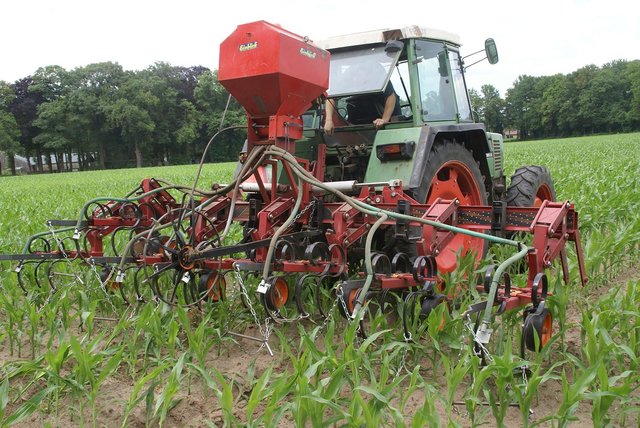
Intercropping of grass and corn to increase soil … [Pays-Bas]
Grass intercropping on corn fields
- Compilateur : Jason Stuka
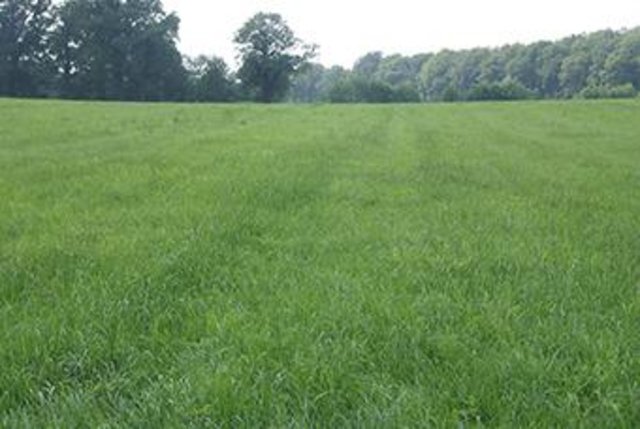
Humic acid application [Pays-Bas]
Humic acid application is a technology that allows the farmer to supply organic matter to the soil, without supplying additional nitrogen and phosphorus.
- Compilateur : Jason Stuka
2. Description de l'Approche de GDT
2.1 Courte description de l'Approche
Social innovation for sustained soil organic matter, clean drinking water and sustainable crop production
2.2 Description détaillée de l'Approche
Description détaillée de l'Approche:
Aims / objectives: A group of farmers cooperates with the drinking water company and aims for a more healthy soil. The sandy soil is low in organic matter. They expect that increasing the soil organic matter content will retain more nitrates in the soil, leading to a reduction in nitrate leaching and a higher nutrient availability for the crops.
Dairy farms grow grass and corn. Some farmers also produce potatoes and cereals.
Most farms deal with suboptimal moisture conditions. Increasing the soil organic matter content and improving the soil structure is expected to be a key factor in improving soil moisture content, both in dry and wet periods.
For most farmers soil biodiversity is terra incognita. During the project they will learn about the advantages of good soil fauna and how it can add to better crops.
The case study will explore management options to increase and maintain organic matter content in soil via different rotations, specific varieties of grasses and corn, cover crops and additions of organic amendments and fertilizers. Although the case study is about soil management and technology to improve soil quality, social innovation is a key objective: combining knowledge and experience of a group of neighbours and farmers within a small region and developing solutions and opportunities for the whole area.
Methods: lectures, site visits, group sessions with models (computer sessions), kitchen table interviews (interactive advice), providing relevant literature
Stages of implementation: fund raising - building support - knowledge transfer - pilots of measures - applied expert advice - launch of the foundation HOE Duurzaam - implementation of new measures - increase of nr of participants - field excursion - closing event of the project 'gezond Zand'
Role of stakeholders: Pioneer farmers : initiating and leading the project, fouding HOE Duurzaam
Other farmers : participating, implementing measures, sharing experience
VITENS Drinking water company: providing money and urgency
ROM3d : project leader, motivating farmers, intermediate between area and government
ALterra, Wageningen UR: providing knowledge
Other important information: An adjustment in the national regulations for manure application was an important driving factor for the development of the approach. Farmers were authorised to apply more manure per ha if they have 75% of their land under grassland. This criterion changed to 80% during the implementation of the approach.
2.3 Photos de l'approche
2.5 Pays/ région/ lieux où l'Approche a été appliquée
Pays:
Pays-Bas
Région/ Etat/ Province:
Netherlands, Gelderland
Autres spécifications du lieu :
Municipality of Berkelland
Map
×2.6 Dates de début et de fin de l'Approche
Indiquez l'année de démarrage:
2011
Date (année) de fin de l'Approche (si l'Approche n'est plus appliquée):
2014
2.7 Type d'Approche
- initiative/ innovation récente locale
2.8 Principaux objectifs de l'Approche
The Approach focused mainly on SLM with other activities (energy, landscape conservation, recreation, drinking water)
The main aims and objectives of the approach were social innovation and social learning with regard to sustainable management of the land in the area. This implied combining knowledge and experience from scientists, neighbours and other farmers. The final goals are to improve soil quality, soil organic matter status and groundwater quality.
The SLM Approach addressed the following problems: Decreasing yields, problems with management (water logging, increased irrigation requirements), changed regulation ('manure derogation') that suppressed agricultural production; drinking water production expected problems with nitrate in the groundwater.
2.9 Conditions favorisant ou entravant la mise en œuvre de la(des) Technologie(s) appliquée(s) sous l'Approche
disponibilité/ accès aux ressources et services financiers
- entrave
The device to separate manure in thick and thin fractions could not have been purchased by an individual farmer.
Treatment through the SLM Approach: The foundation purchased the device.
cadre juridique (régime foncier, droits d'utilisation des terres et de l'eau)
- favorise
The existing land ownership, land use rights / water rights greatly helped the approach implementation: Ownership made farmers stakeholder, rented land is treated less carefully; renting farmers are less motivated to change their land mmanagement.
- entrave
The exchange of manure between farms in order to comply with manure regulations is not allowed by law.
Treatment through the SLM Approach: The approach searches possibilities to consider the project area as a single enterprise unit for complying with the manure regulation.
connaissances sur la GDT, accès aux supports techniques
- entrave
Grass undersowing is technically complicated to implement, due to the damage that could be brought to the standing crop.
Treatment through the SLM Approach: Skilled agricultural contractors were hired by the farmers jointly; the concern was releived from the individual farmers.
3. Participation et rôles des parties prenantes impliquées dans l'Approche
3.1 Parties prenantes impliquées dans l'Approche et rôles
- exploitants locaux des terres / communautés locales
land users and the Foundation HOEduurzaam
Land users not member of the Foundation, but interested to learn from the project. Foundation HOEduurzaam; 98% of the land is owned by members of the Foundation. Agricultural enterprises in the area are mainly run by men. Knowledge is exchanged a.o. during hunting activities. Mainly men attended the lectures and interactive sessions. 3 women attended in the three year period.
- Spécialistes de la GDT/ conseillers agricoles
Experts the drinking water company Vitens, the fertiliser companu Triferto, the Louis Bolk research Institute (agronomy) and from Wageningen UR (agronomy, plant production and soil science)
- secteur privé
Vitens Drinking Water Company
- gouvernement local
Municipality of Berkenwoude
- gouvernement national (planificateurs, décideurs)
Province of Gelderland
From the Water board Vechstromen, Municipality Berkelland, Province of Gelderland. Mayor and counseller of the community Berkelland, Deputy of the Province of Gelderland, Ministry of Economic Affairs
- the foundation HOEDuurzaam
HOEDuurzaam. Drinking water company Vitens, agricultural nature association, cultural landscape heritage association
Si plusieurs parties prenantes sont impliquées, indiquez l'organisme chef de file ou l'institution responsable:
The approach was designed jointly by national SLM specialists from the consultancy firm ROM3D and Alterra, the land users and the Foundation HOEduurzaam (representing land users, entrepreneurs and citizens in the area). The application for funding at the Province was made by one of the land users on behalf of the land users.
3.2 Participation des exploitants locaux des terres/ communautés locales aux différentes phases de l'Approche
| Participation des exploitants locaux des terres/ communautés locales | Spécifiez qui était impliqué et décrivez les activités | |
|---|---|---|
| initiation/ motivation | auto-mobilisation | 8 land users submitted the application for funding to the Province to implement the measures |
| planification | interactive | Due to the interactive nature of the project there was no official planning. There was a sequence of knowledge supplied, testing in pilots, assess outcomes, renewed pilots and implementation of measures proven succesfull. |
| mise en œuvre | auto-mobilisation | |
| suivi/ évaluation | interactive | |
| Research | soutien extérieur | Lectures from external advisors (Peter Kuikman, Coen ter Berg, Jos Groten (Wageningen UR-PPO), Annemieke Smit (Wageningen UR-Alterra), Zwier van der Vechte (Wageningen UR Livestock Research) and calculation sessions with the HLB tool. |
3.4 Prises de décision pour la sélection de la Technologie/ des Technologies
Indiquez qui a décidé de la sélection de la Technologie/ des Technologies à mettre en œuvre:
- principalement les exploitants des terres soutenus par des spécialistes de la GDT
Expliquez:
The land users took the final decisions in their selection of SLM technologies and measures. The SLM specialists contributed by giving information and advice.
Decisions on the method of implementing the SLM Technology were made by mainly by land users supported by SLM specialists
4. Soutien technique, renforcement des capacités et gestion des connaissances
4.1 Renforcement des capacités/ formation
Une formation a-t-elle été dispensée aux exploitants des terres/ autres parties prenantes?
Oui
Spécifiez qui a été formé:
- exploitants des terres
Si pertinent, spécifiez le genre, l'âge, le statut, l'ethnie, etc.
male farmers aged between 30 and 60
Formats de la formation:
- entre agriculteurs (d'exploitants à exploitants)
- zones de démonstration
- cours
Formats de la formation:
- advisory sessions between land users and SLM advis
Thèmes abordés:
fertilisation, soil fertility, crop management
4.2 Service de conseils
Les exploitants des terres ont-ils accès à un service de conseils?
Oui
Spécifiez si le service de conseils est fourni:
- dans les champs des exploitants?
Décrivez/ commentez:
Name of method used for advisory service: 'zitdagen'; advisory sessions between land user and consultant; Key elements: problem analysis: which fields have the largest problems and why? training sessions with the computer tool for selection of measures to improve OM status, meetings for knowledge exchange; There was also a questionnaire to inventory the measures farmers wanted to implement.
Advisory service is quite adequate to ensure the continuation of land conservation activities; The Foundation HOEduurzaam will support the continuation of SLM activities in the area.
4.3 Renforcement des institutions (développement organisationnel)
Des institutions ont elles été mises en place ou renforcées par le biais de l'Approche?
- oui, un peu
Spécifiez à quel(s) niveau(x), ces institutions ont été renforcées ou mises en place:
- local
Précisez le type de soutien:
- financier
- renforcement des capacités/ formation
- marketing
Donnez plus de détails:
Foundation HOEduurzaam has small financial revenues from their activities. Campsite Veldzicht rented their accommodation several times for venues of the land users and stakeholders, and will benefit from publicity around the approach to attract more visitors.
4.4 Suivi et évaluation
Le suivi et l'évaluation font ils partie de l'Approche? :
Oui
Commentaires:
bio-physical aspects were ad hoc monitored by project staff through observations; indicators: pictures of development of grass undersowing and crops
bio-physical aspects were ad hoc monitored by land users, other through measurements; indicators: land users should measure OM every 4 years to get subsidies; constituents of the groundwater used to produce drinking water
There were no changes in the Approach as a result of monitoring and evaluation: The approached worked well, so there were no changes until now.
There were few changes in the Technology as a result of monitoring and evaluation: Several technologies were abandoned or could not be implemented: substituting crops in rotations (less potatoes, early germinating maize varieties), use of roadside rsidues as compost (due to legal constraints)
Humic acid was implemented at more fields after the first optimistic results. The early harvest of corn was not implemented, but sowing grasss underneath the corn was developed during the project.
4.5 Recherche
La recherche a-t-elle fait partie intégrante de l’Approche?
Oui
Spécifiez les thèmes:
- économie/ marketing
- technologie
Donnez plus de détails et indiquez qui a mené ces recherches:
economics/marketing: cost-benefit analysis still to be performed - ROM3D and Alterra and Foundation HOEduurzaam
technology: continued search for new methods and measures; mapping the status of soil organic matter and soil organic matter balance calculations with a tool - Alterra, ROM3 and Foundation HOEduurzaam
Research was carried out both on station and on-farm
5. Financement et soutien matériel externe
5.1 Budget annuel de la composante GDT de l'Approche
Si le budget annuel précis n'est pas connu, indiquez une fourchette:
- 10 000-100 000
Commentez (par ex. principales sources de financement/ principaux bailleurs de fonds):
Approach costs were met by the following donors: international (European Fund for Rural Development and the EU FP7 RECARE project): 5.0%; government (Ministry of Economic Affairs ): 40.0%; private sector (Vitens drinking water company): 10.0%; local government (district, county, municipality, village etc) (Province of Gelderland (100-350 €/ha) - subsidy regulation for sustainable soil management): 35.0%; local community / land user(s) (labour, time investment, seeds, materials): 5.0%; other (own contributions research and consultancy firms (Alterra, ROM3D)): 5.0%
5.2 Soutiens financiers/ matériels fournis aux exploitants des terres
Les exploitants des terres ont-ils reçu un soutien financier/ matériel pour la mise en œuvre de la Technologie/ des Technologies?
Oui
5.3 Subventions pour des intrants spécifiques (incluant la main d'œuvre)
- équipement
| Spécifiez les intrants subventionnés | Dans quelle mesure | Spécifiez les subventions |
|---|---|---|
| machines | en partie financé | Manure separator |
- intrants agricoles
| Spécifiez les intrants subventionnés | Dans quelle mesure | Spécifiez les subventions |
|---|---|---|
| semences | en partie financé | |
| Human acids | en partie financé | |
Commentaires:
payments were meant to cover potential costs of reduced crop yield and the agricultural contractor (loonwerker)
5.4 Crédits
Des crédits ont-ils été alloués à travers l'Approche pour les activités de GDT?
Non
6. Analyses d'impact et conclusions
6.1 Impacts de l'Approche
Est-ce que l'Approche a aidé les exploitants des terres à mettre en œuvre et entretenir les Technologies de GDT?
- Non
- Oui, un peu
- Oui, modérément
- Oui, beaucoup
Farmers are more concerned about soil and organic matter, they understand that they have options to improve and make choices in implementation of measures. Some measures need coordination at the aera level (e.g. the use of goat manure and roadside residues), those were not implemented yet, but small scale mearsures are becoming more common.
Est-ce que l'Approche a autonomisé les groupes socialement et économiquement défavorisés?
- Non
- Oui, un peu
- Oui, modérément
- Oui, beaucoup
no socially and economically disadvantaged groups in this area
Est-ce que l'Approche a amélioré les questions foncières et des droits d'utilisation qui entravent la mise en œuvre des Technologies?
- Non
- Oui, un peu
- Oui, modérément
- Oui, beaucoup
Ownership of the land made it possible for the farmers to decide what management was implemented. Hindering: when fields were rented by farmers outside the area/project, poor management of the soil decreased the soil organic matter content.
Did other land users / projects adopt the Approach?
- Non
- Oui, un peu
- Oui, modérément
- Oui, beaucoup
Did the Approach lead to improved livelihoods / human well-being?
- Non
- Oui, un peu
- Oui, modérément
- Oui, beaucoup
Farmers learned about how others are working and they met more regularly in an informal setting.
Did the Approach help to alleviate poverty?
- Non
- Oui, un peu
- Oui, modérément
- Oui, beaucoup
Poverty does not occur in the area.
6.2 Principale motivation des exploitants des terres pour mettre en œuvre la GDT
- augmenter la production
The dairy farmer's income is under pressure due to the low milk price.
- augmenter la rentabilité/ bénéfice, rapport coûts-bénéfices
Farmers realise that in the long term, declining soil organic matter will reduce production.
- règles et règlements (amendes)/ application
Stricter manure regulation under the CAP forces farmers to manage organic matter efficiently.
- affiliation à un mouvement/ projet/ groupe/ réseaux
Farmers are interested to learn improvements for farm management from other farmers.
- conscience environnementale
Farmers care for their land and animals. Also for good quality groundwater.
6.3 Durabilité des activités de l'Approche
Les exploitants des terres peuvent-ils poursuivre ce qui a été mis en œuvre par le biais de l'Approche (sans soutien extérieur)?
- oui
Si oui, décrivez de quelle manière:
The Foundation HOEduurzaam will continue to act in the area. For the next 10 years measures will be part
of the subsidy grant.
6.4 Points forts/ avantages de l'Approche
| Points forts/ avantages/ possibilités du point de vue de l'exploitant des terres |
|---|
| Farmers are positive about the information provision on the measures in the informatoin sessions, by their mutual exchange of information, and through the direct contact with experts. They expect the measures to increase the soil organic matter and yields, also through an improved bearing capacity of the soil. (How to sustain/ enhance this strength: Continued exchange of information on measures to increase SOM between the farmers themselves, subsidy to finance the measures (either through the regional government or the dairy company).) |
| Points forts/ avantages/ possibilités du point de vue du compilateur ou d'une autre personne ressource clé |
|---|
|
1. social innovation by working together and learning from each other 2. HOEduurzaam (foundation) represents 98% of the land owners and land users in the area, and is an important stakeholder for the local /regional goverment 3. all training was specifically designed for the group 4. HOEduurzaam is also active in the Energie-marke, a local renewable energy cooperative (How to sustain/ enhance this strength: continuing the approach, Foundation HOEduurzaam remaining active, follow-up projects to monitor effects of measures to stimulate farmers to continue to implement the measures. ) |
6.5 Faiblesses/ inconvénients de l'Approche et moyens de les surmonter
| Faiblesses/ inconvénients/ risques du point de vue de l’exploitant des terres | Comment peuvent-ils être surmontés? |
|---|---|
| No disadvantages to the approach were mentioned by the land users. | not applicable |
| Faiblesses/ inconvénients/ risques du point de vue du compilateur ou d'une autre personne ressource clé | Comment peuvent-ils être surmontés? |
|---|---|
|
1. support of the measures by consultants was only 2 years, whereas the effects on SOM are only perceptable after 10 years 2. Foundation HOEduurzaam does not have a soil expert |
Bring attention to production and water use. |
7. Références et liens
7.1 Méthodes/ sources d'information
- visites de terrain, enquêtes sur le terrain
- interviews/entretiens avec les exploitants des terres
7.2 Références des publications disponibles
Titre, auteur, année, ISBN:
website of the Foundation HOEduurzaamW.A. Rienks en H. Leever, 2014. Gezond Zand – organische stof als sleutel voor een vruchtbare bodem en schoon water.
Disponible à partir d'où? Coût?
http://www.hoeduurzaam.nl http://www.hoeduurzaam.nl/images/gallery/nieuws/Brochure/BrochureHoeduurzaam%20Definitief.pdf
Titre, auteur, année, ISBN:
W.A. Rienks en H. Leever, 2014. Gezond Zand – organische stof als sleutel voor een vruchtbare bodem en schoon water.
Disponible à partir d'où? Coût?
http://www.hoeduurzaam.nl/images/gallery/nieuws/Brochure/BrochureHoeduurzaam%20Definitief.pdf
Liens et modules
Développer tout Réduire toutLiens

Postpone grassland renewal [Pays-Bas]
Postponing the timing of ploughing a grassland field by one or two years to reduce nutrient losses and organic matter decomposition.
- Compilateur : Jason Stuka

Intercropping of grass and corn to increase soil … [Pays-Bas]
Grass intercropping on corn fields
- Compilateur : Jason Stuka

Humic acid application [Pays-Bas]
Humic acid application is a technology that allows the farmer to supply organic matter to the soil, without supplying additional nitrogen and phosphorus.
- Compilateur : Jason Stuka
Modules
Aucun module trouvé


